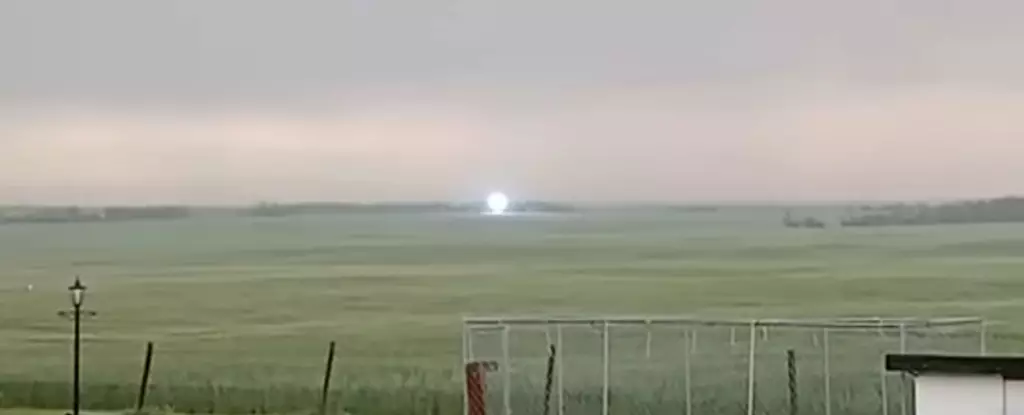In a world where scientific explanations often triumph over myths and legends, encountering a phenomenon like ball lightning prompts deep reflection on our understanding of natural forces. The incident involving Ed and Melinda Pardy’s encounter during a fierce lightning storm stands as a powerful reminder that nature still guards secrets beyond our grasp. As they captured a luminous sphere hovering ominously above the ground after a lightning strike, it confronts the skepticism of mainstream science with an almost mystical aura. This event not only challenges our current understanding but also calls into question whether we are truly equipped to decode every anomaly the universe presents.
Despite advances in atmospheric physics, the reality remains that phenomena like ball lightning continue to evade comprehensive scientific explanation. The rarity and unpredictable behavior of these orbs make laboratory replication nearly impossible, leaving researchers to rely on anecdotal reports and circumstantial evidence. The Canadian footage, notable for its clarity and duration, provides a rare glimpse into something that could potentially expand the boundaries of scientific knowledge. Yet, skepticism persists, fueled by debates over alternative explanations such as electrical artifacts or misinterpretations of high-voltage power lines. These disputes reflect a fundamental tension in the scientific community: the struggle between empirical skepticism and open-minded curiosity about phenomena that defy conventional models.
The Limitations of Scientific Exploration in the Face of the Unknown
Current scientific endeavors have made tentative strides toward understanding ball lightning, often focusing on laboratory simulations that attempt to reproduce its ethereal glow. For instance, experiments involving plasma formations have yielded some insight, but none have definitively explained the full range of observed behaviors—such as mobility, longevity, and color variance. The rural Canadian footage suggests a size and behavior that is consistent with historical accounts, but without corroborative data or repeatable experiments, certainty remains elusive.
This backdrop underscores an important philosophical aspect: the scientific method relies on repeatability and falsifiability. When faced with an event as rare and unpredictable as the Pardy sighting, it becomes a challenge to develop a theoretical framework that can accommodate all its nuances. This is compounded by the fact that some scientists lean toward skeptics’ views, suggesting that what appears as a mysterious light could be a misinterpretation or a mundane phenomenon like a high-voltage arc or aerial debris illuminated by a lightning strike. However, dismissing such sightings outright risks dismissing potentially groundbreaking discoveries that could revolutionize our understanding of atmospheric physics and electrical phenomena.
The Broader Implications and Cultural Significance of the Phenomenon
The enduring fascination with ball lightning is not merely scientific curiosity but also a reflection of our desire to comprehend the extraordinary. For many, such phenomena embody the boundary between the known and the unknown—reminding us of our limited grasp of the universe. They evoke a sense of wonder and a longing for discovery that transcends academia, resonating with cultural narratives about mystical or supernatural forces inherent in nature.
Furthermore, incidents like the Pardy sighting challenge us to rethink the trustworthiness of our perceptions and the limits of technological detection. As drone and camera technology become more prevalent, the potential to witness and record these phenomena increases, yet skepticism also intensifies. Society must grapple with the tension between embracing unexplained mysteries as genuine insights into the natural world and dismissing them as mere artifacts of electrical interference or visual illusions.
From a center-leaning liberal perspective, there is an imperative to support open scientific investigation while also acknowledging that some mysteries might signal the existence of forces or principles yet to be understood by human science. Clinging rigidly to current models risks dismissing phenomena simply because they challenge existing paradigms. Instead, fostering curiosity, funding exploratory research, and maintaining an openness to the mysterious aligns with a balanced and progressive scientific ethos. Sometimes, the most extraordinary truths lie just beyond the fringe of our understanding, waiting for us to venture into the unknown with humility and determination.


Leave a Reply